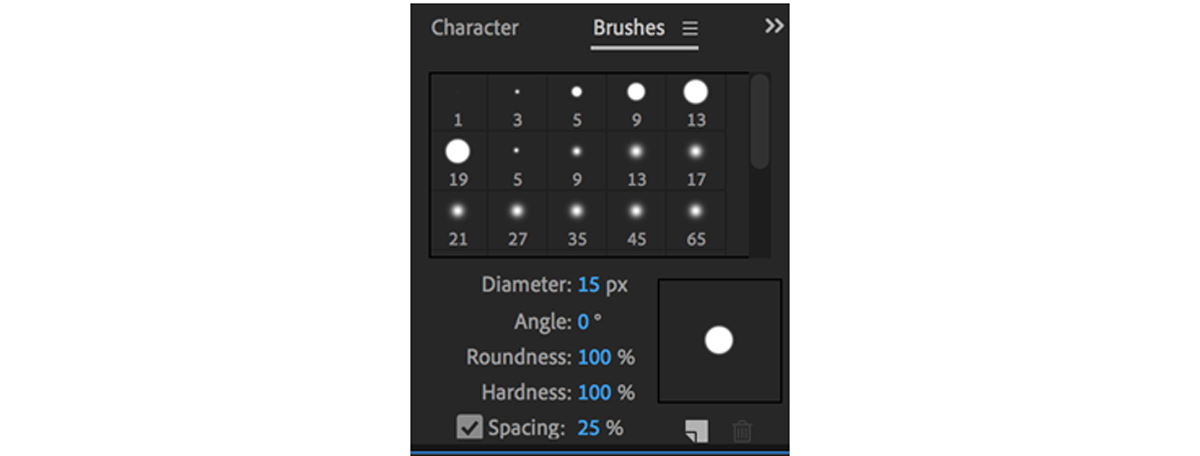Can You Draw Animation With Adobe Sketch
It'south easy to create your own frame-by-frame animation using Adobe After Effects' castor tool.
If you've ever looked through a flipbook, y'all have seen that images with slight differences can create the overall illusion of movement. Y'all tin can apply this same technique of frame-by-frame cartoon to create your own animations in Adobe After Furnishings. It is a tedious procedure, but luckily, it is non hard! This bones tutorial will teach you the basic method, which can exist applied to any illustrations you would like.
 An example of blitheness frames.
An example of blitheness frames. (To acquire how y'all can apply this flim-flam to TikTok videos, click hither. Or, desire to skip the organic drawing and but trace over the frames of a video? We have a tutorial for that, as well.)
- Create a new composition with a solid color layer.
We are going to utilise this solid color equally our background. Go to Layer > New > Solid to create one with a colour of your choice.
- Double-click the brush tool (
 ) to create a pigment layer.
) to create a pigment layer.Once this is created, you tin select your paintbrush too.

In this example, I am using a simple, circular xv px brush in the color white.
- Prepare the frame elapsing every bit a "custom" of 2f.
The duration indicates how many frames of motion your paint strokes will exist on-screen for. ii is a convenient elapsing because it allows your frames to overlap for a 2d—you lot volition see how this works after the next couple steps.

- Describe your first frame.
For this example, I am going to draw a curly, moving doodle. The start frame might be boring, but the animation will look clean if information technology starts out small-scale!

- Use the command key and right pointer key to advance to the next frame.
Exercise this once to motion one frame forrad. Nothing will modify, merely depict your second frame on height of the commencement one. You lot'll want to employ the aforementioned colour, but for the sake of this tutorial, I used white to show my first stroke and black to show the second.

- Repeat this footstep until your animation is complete.
When y'all press control+right pointer this time, you should see only your 2d brushstroke. Add your 3rd 1 on top of this and repeat the step (Draw your frame, advance one frame forward. Depict, advance. Draw, advance.) until your animation reaches its last frame.
You can move backwards in the timeline past pressing command+left arrow. To delete a brushstroke or change its duration, click the downward pointer beside "effects" in your timeline window. Open up the paint layer. You should be able to run across all of the brushstrokes you accept created, each spanning the number of frames it occupies onscreen. Scroll until you find the brush you would like to delete or modify. Y'all can delete a brush using your estimator's delete key or modify the length of a brush past dragging the showtime and endpoints back and forth in the timeline.

- Click dorsum into the main composition to view your blitheness.
Close the paint layer by going back to your original composition. The tabs usually appear along the acme of your project window. Drag the playhead to the beginning and press the spacebar to watch your animation from beginning to end.

Source: https://makeitcenter.adobe.com/en/blog/frame-animation-after-effects.html
Posted by: daltonanduction.blogspot.com

0 Response to "Can You Draw Animation With Adobe Sketch"
Post a Comment